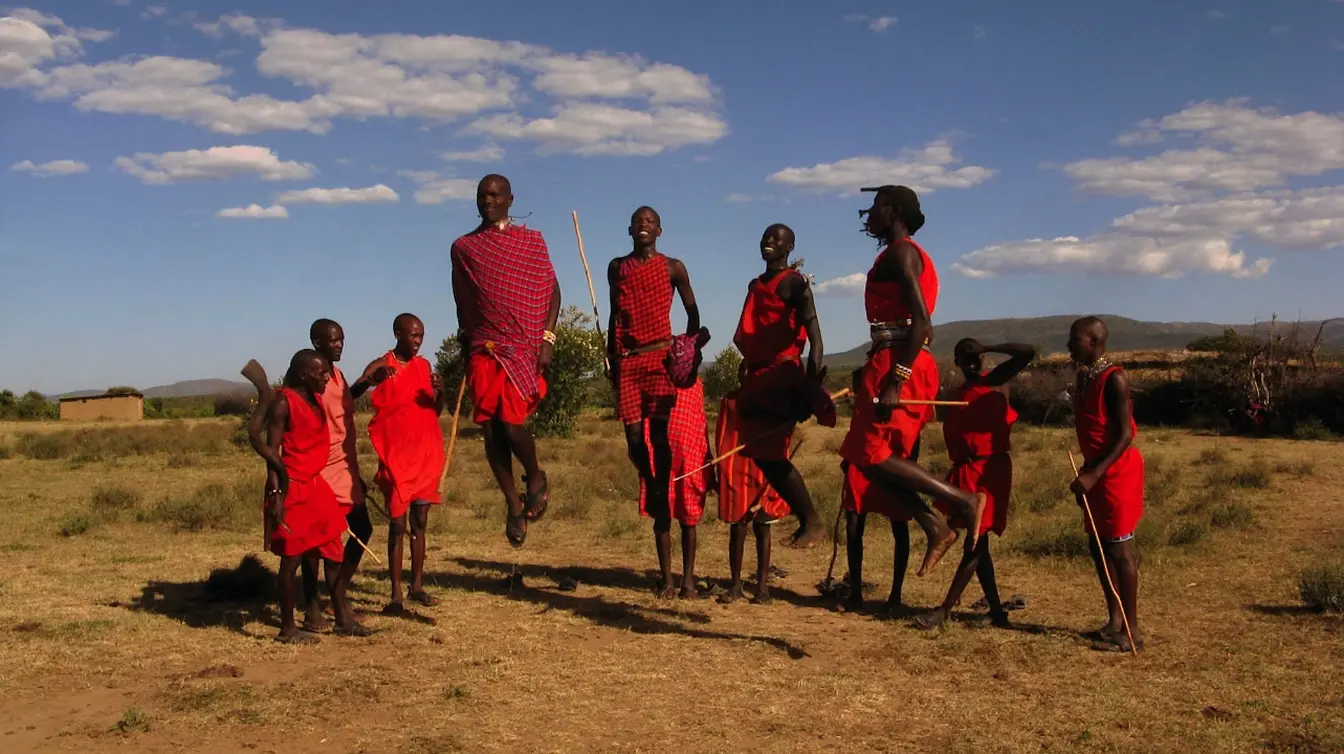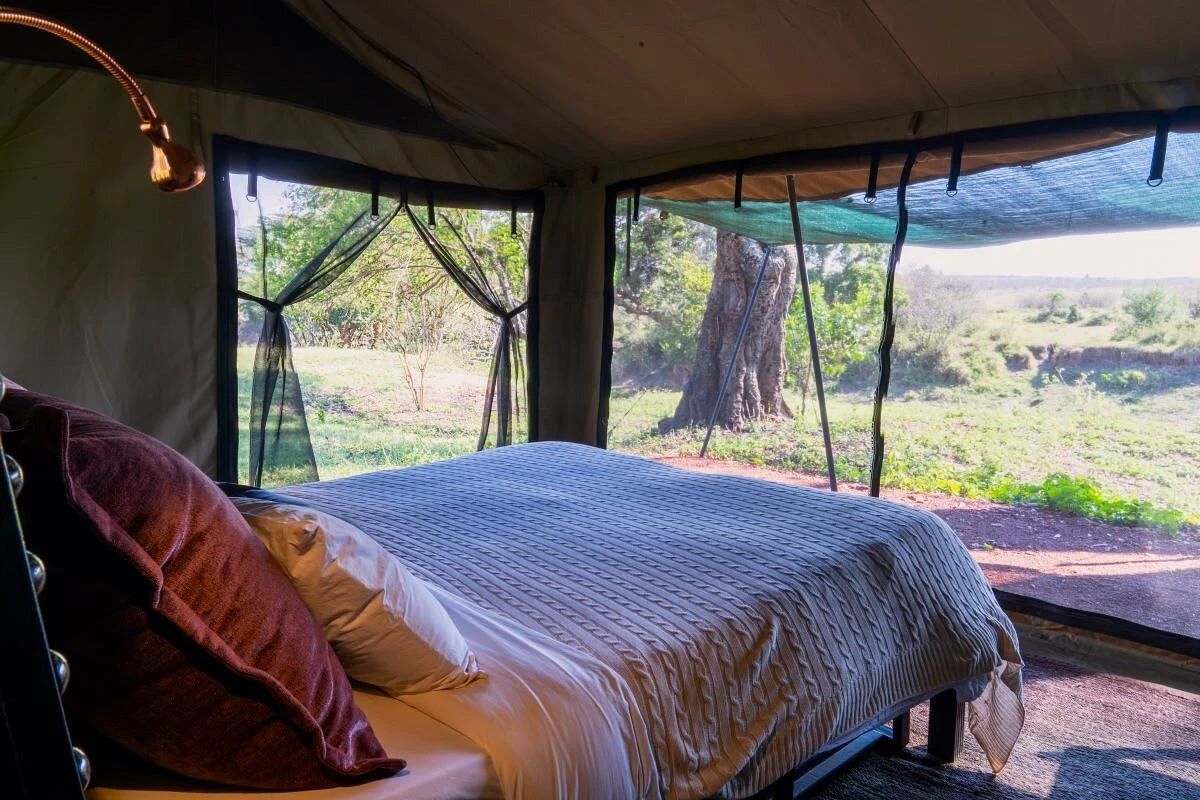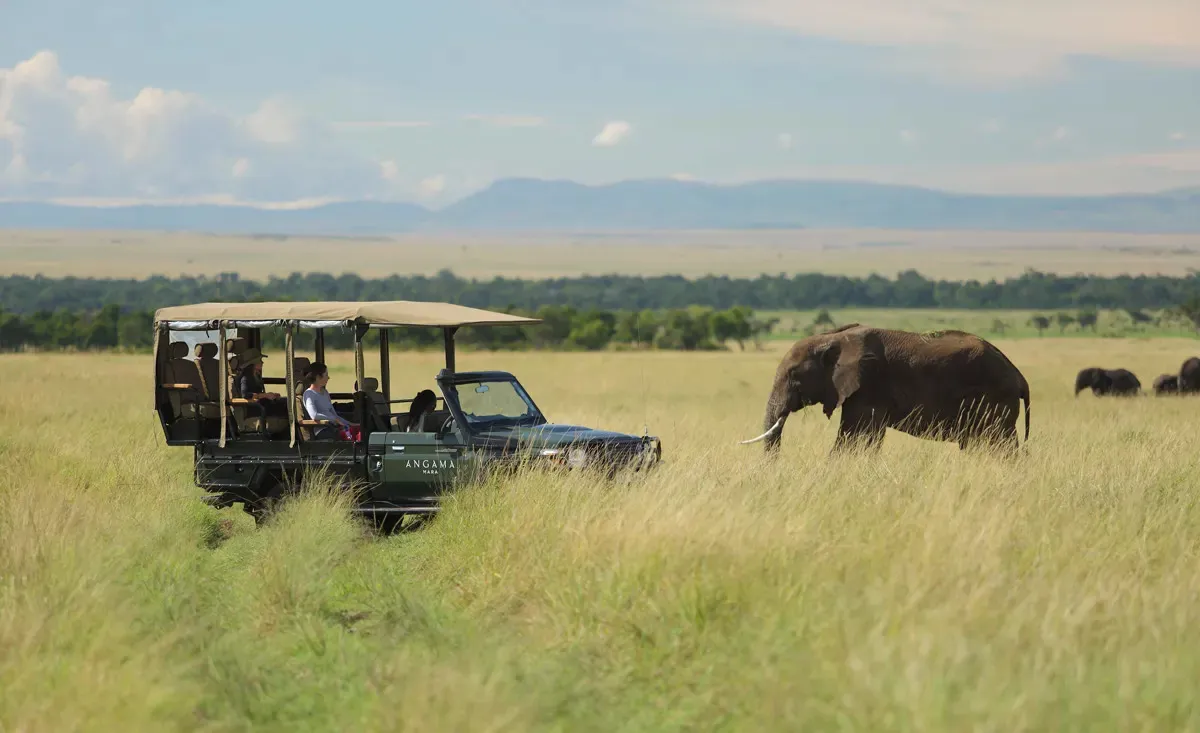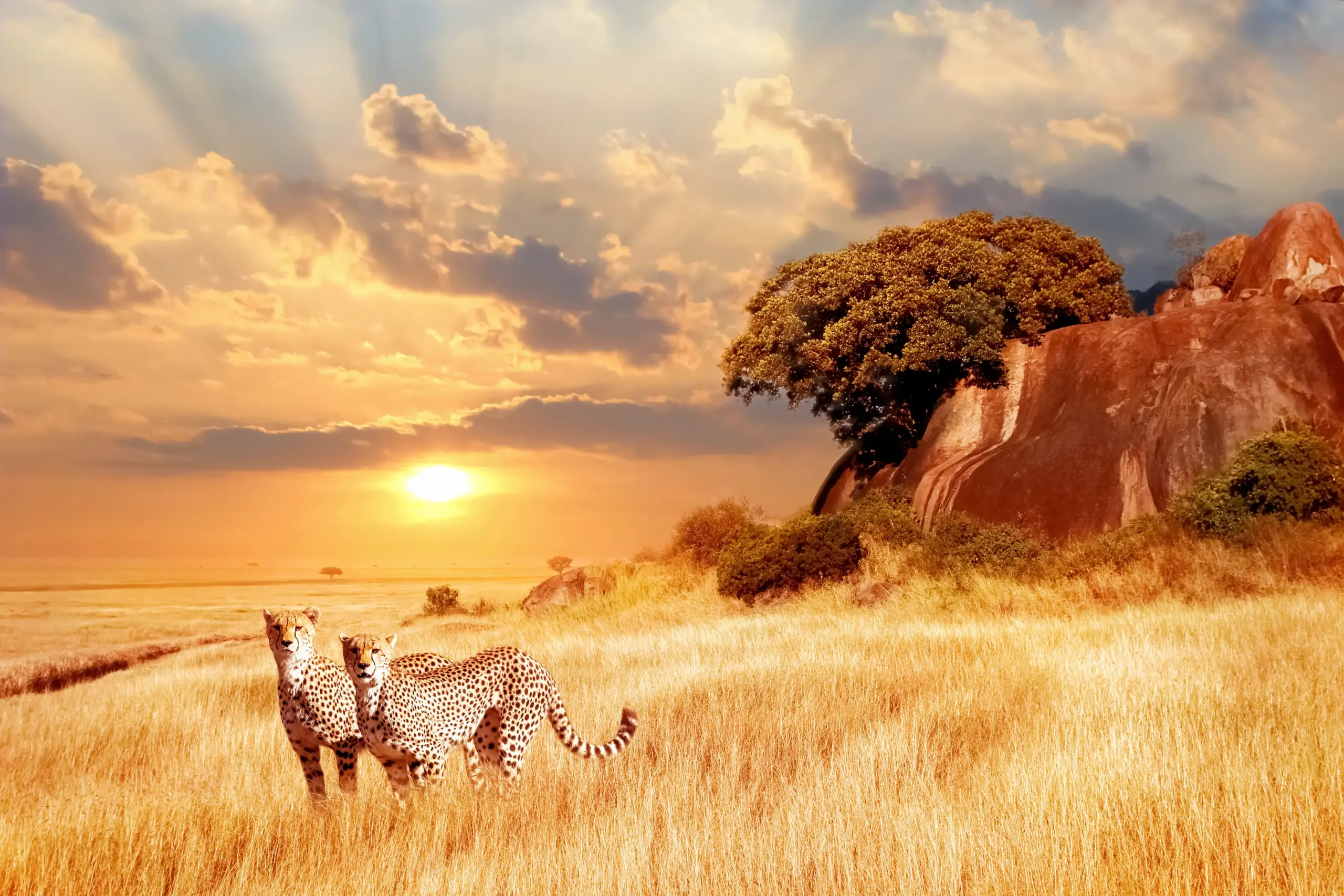Landscape and Vegetation Masai Mara
Imagine standing in the heart of the Masai Mara National Reserve, where endless golden grasslands roll beneath an expansive blue sky. Scattered acacia trees punctuate the horizon, creating a scene straight out of Out of Africa. This breathtaking wilderness is more than just sweeping plains—it’s a land of contrasts. Beyond the rolling grasslands, the Mara reveals hidden treasures, from lush riverine forests teeming with life to rugged escarpments that shape the landscape, offering a safari experience unlike any other.
Four Unique Landscapes of the Masai Mara
Spanning the vast Great Rift Valley—a colossal 5,600-kilometer fault line stretching from Ethiopia’s Red Sea coast through Kenya, Malawi, Tanzania, and Mozambique—the Maasai Mara National Reserve boasts a striking variety of landscapes. The Mara ecosystem features four distinct terrains, each with its own unique characteristics. To the east, the Ngama Hills offer a refuge for rhinos, their sandy soils and dense shrubbery forming the ideal habitat. In the west, the towering Oloololo Escarpment rises dramatically, a sheer rock face standing as a defining landmark. The Mara Triangle, nestled along the Mara River, is a mix of rolling grasslands and acacia woodlands, making it a prime location for diverse wildlife, including migrating wildebeest.
The Vast Open Masai Mara Plains
The Masai Mara is best known for its expansive, unbroken grasslands, an endless golden savannah stretching as far as the eye can see. These vast plains remain untouched by human development, providing the quintessential African safari backdrop. Here, grazing herbivores roam freely, pausing to scan the horizon or perching atop termite mounds in quiet observation. This open landscape is the stage for nature’s most thrilling spectacle—the dynamic chase between predators and prey. With unobstructed views, visitors can witness the abundant wildlife that flourishes in this remarkable terrain.
Mara’s Riverine Forests
Beyond the endless grasslands, the Masai Mara is enriched by lush riverine forests. The Mara and Talek Rivers serve as essential lifelines for the ecosystem, retaining water throughout the year despite seasonal floods. This continuous water source nurtures towering evergreen trees, which provide cooling shade and sustain moisture in the soil and air. The dense vegetation includes an array of leafy bushes, offering shelter and sustenance for birds, insects, and numerous other species. Shade-loving plants flourish along the forest floor, while creeping vines and orchids drape the branches, creating a thriving, biodiverse habitat.
The Remote Loita Hills
At first glance, the Loita Hills may appear unremarkable, but a journey through rugged terrain and hours of patience reveal a hidden gem—the sacred ‘Forest of the Lost Child.’ Rising to 2,150 meters, this secluded mountain range lies northeast of the Masai Mara National Reserve and remains one of the most untouched regions of Masai land. Its isolation ensures minimal human presence, preserving its pristine beauty. For adventurers, guided walking safaris navigate winding trails through the thick jungle. The Loita Hills also witness a remarkable event known as the ‘little migration,’ where countless wildebeest embark on an annual trek, a lesser-known yet equally captivating spectacle.
Masai Mara versus the Serengeti National Park
The Serengeti and the Masai Mara stand out as two famous safari destinations, each with its unique attributes. The Serengeti is vast, covering a remarkable 30,000 square kilometers, while the Masai Mara is much smaller, spanning 1,510 square kilometers. Despite its compact size, the Masai Mara ecosystem is incredibly rich, home to over 40% of Africa’s large mammals, even though it represents just 0.01% of Africa’s total landmass. As travelers move north from the Serengeti to the Masai Mara border, they will notice the landscapes begin to resemble each other. The Masai Mara is characterized by its lush greenery, a higher density of trees, and a more rolling, hilly landscape compared to the Serengeti. Both the Masai Mara and Serengeti boast extensive river systems, with the Mara River being a significant feature. This river, flowing from the Masai Mara into the Serengeti, is the dramatic setting for the great migration’s river crossings by wildebeest and zebras. Additionally, the mara predator conservation programme is vital in safeguarding the Masai Mara’s diverse wildlife.
Plan Your Unforgettable Masai Mara Safari
Your Masai Mara Adventure Awaits! Step into the untamed beauty of the Masai Mara, where golden savannahs, lush riverine forests, and breathtaking wildlife encounters create an unforgettable safari experience. Whether you’re drawn by the thrill of the Great Migration or the serenity of the Mara’s diverse landscapes, your journey starts here.- Email us at [email protected] or [email protected]
- WhatsApp/Call us at +254 748 258880
Welcome to AjKenya Safaris
Thanks for stopping by! We’re excited to help you plan an unforgettable safari.
- Phone: +254 748 258880
- WhatsApp: +254 748 258880
- Email: [email protected]
- Email: [email protected]





